Travelling through foreign countries can be an uplifting experience. Getting to know different cultures, societies, religions, ways of life, etc. through real life interaction with locals will teach you more about that country than you could possibly learn from books. This comes with its own challenges, though. If you’re visiting a non English speaking country and dare to straddle off the beaten tourist track (where the real deal is), you will likely be faced with situations when communication gets tricky. You have just come to that country and don’t speak a word in their language and neither do any of the locals speak English. In cases like that, using body language and the many seemingly universal gestures can become invaluable.
Tricky thing is, that some gestures have completely different meaning in other countries from what you may be used to. Not only could your intended message get lost in translation, you could actually end up offending or otherwise causing an unintentional, but inappropriate and unfortunate circumstance for yourself. Some gestures simply have different meaning in one part of the world than in another. Let’s take a look at some of the most common gestures we use in North America that are offensive in other countries. This is the list of top gestures most commonly misunderstood abroad along with the list of countries where their meaning is different from that of North America.
Peace Sign in Australia and England
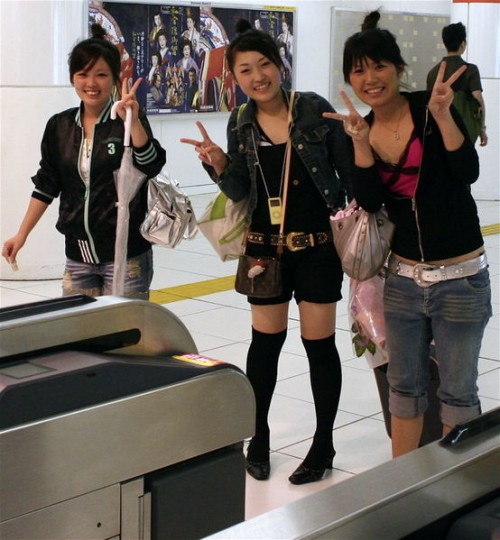
Holding up one’s index and middle fingers to create a “V” shape is typically a sign of “peace” in North America, but this common gesture can have quite a different meaning in Australia and England. While this “V” sign stands for “Victory” in England provided your palm faces outwards, it takes a meaning of “up yours” in Australia when pulled with the palm facing inwards.
Showing Palms in Greece
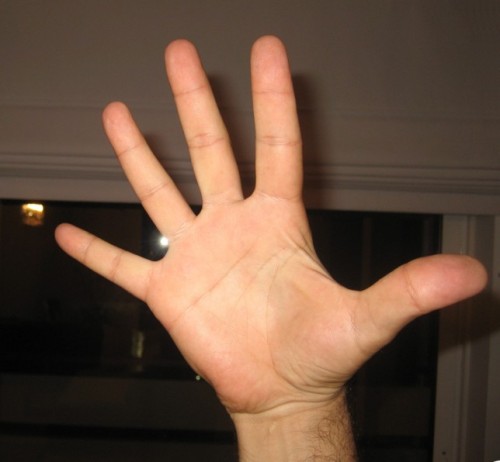
The “talk to the hand” gesture is used in North America to signal an oncoming vehicle or a person to stop, but in Greece it’s best to keep your palms to yourself. The gesture has been perceived as highly insulting in Greece since the time of Byzantine Empire when shackled criminals were tainted by people who’d smear their faces with excrements (known as Moutza).
Thumbs Up in Thailand

A thumbs-up as a sign of approval is a gesture that many people instinctively use, especially if language barrier prevents you from expressing your approval verbally. In Thailand, however this gestures is a sign of mockery and condemnation. It’s akin to one child sticking a tongue out at another. However since Thailand is a very popular country among travellers and many travellers use thumbs-up instinctively, the Thais already grew to accept the fact that foreigners readily use this gesture without meaning any offense so it’s unlikely to cause any offense, however people who use it are still seen as clueless foreigners.
Beckoning Gesture in Philippines

Performing a curling finger motion with one’s index finger as a “come here” sign is perceived as derogatory in many South East Asian countries. This gesture is commonly used for dogs in the Philippines so when used for a person, you would be implying that you see them as something inferior. What’s worse, this gesture could get you arrested and to prevent you from using it again, the authorities could break your finger.
Touching Top of the Head in Sri Lanka
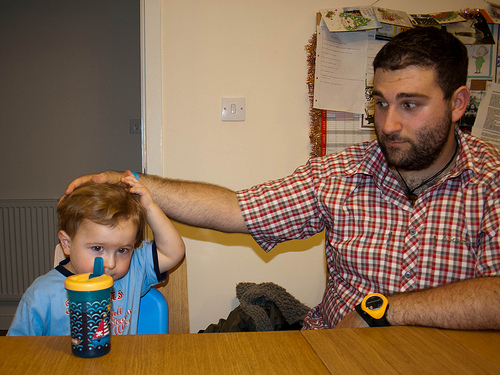
If you pat a child in North American on top of their head with an open palm, you would be showing fondness, but this is not how it’s perceived across South Asia. Predominantly Buddhist countries, such as Sri Lanka perceive top of the head as the most sacred part of the body (feet are the dirtiest) and touching it is seen as highly invasive.
A-OK in France
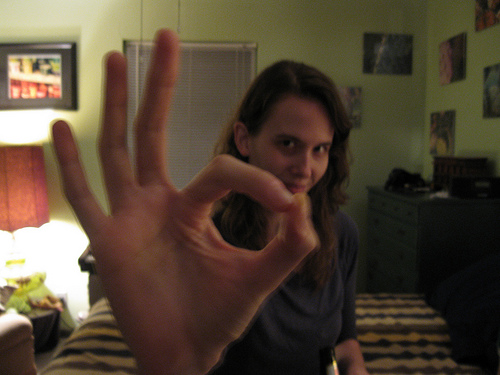
Forming a circle with your forefinger and thumb in North America means that something is “amazing” or “OK-ed” but the gesture has a completely different meaning in France. Since making of the circle forms a zero, this gesture typically means that something or someone is worthless. It’s definitely not a good way to compliment your host on a meal.
Fig Sign in Turkey
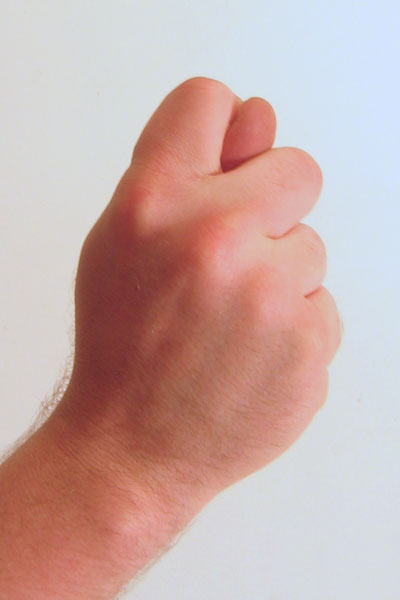
A hand gesture which involved a formation of a fist with the thumb tucked under the index finger is used by children when playing “Got Your Nose”. The fig sign gesture otherwise doesn’t have much meaning to it, but you wouldn’t want to use it in Turkey where it’s an equivalent to the offensive middle finger gesture in North America.
Handing Things with One Hand in Japan
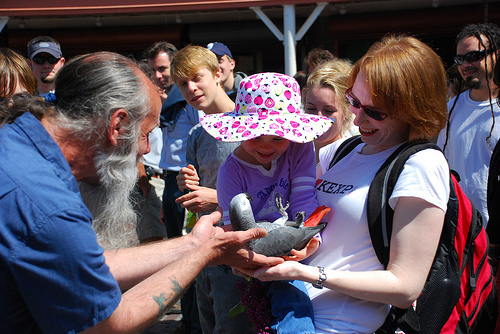
Most Westerners probably don’t pay much attention to whether they’ve used your both hands when handing people things, or only one. We also typically don’t pay much attention to how hands are used when people are handing objects to us, but when visiting Japan, it would pay off to ensure you refrain from one-handed giving. Whether you’re giving someone your business card or passing them your camera to take a picture, make sure you use both hands to hand the item over. The use of both hands signifies sincerity, whereas one-handed presentations are often perceived as dismissive.
Crossing Fingers in Vietnam
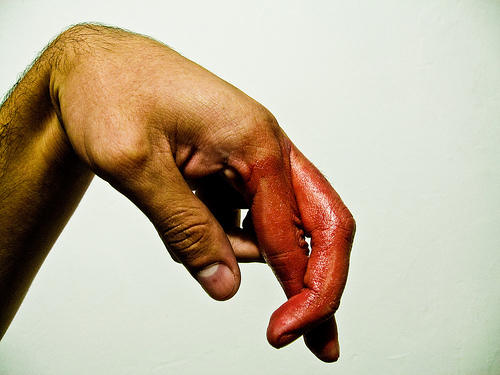
When westerners cross their index and middle fingers at someone, it’s usually to wish them good luck. This gesture however takes an offensive sub-tone in Vietnam where the crossed fingers are seen as a gesture simulating the look of female sexual organs.
Bull Horns in Italy

Fans of Heavy Metal often raise their fists with pinkie and index fingers extended upwards to rock and roll to the tunes of their favourite genre. This bull horns gesture could make for uncomfortable situations when used in Italy, though, especially if used in presence of a man. Italians have long used the bull horn gesture to mock men who are known to have been cheated on by their wives. The Cuckold gesture is also used at football referees after making calls the fans do not agree with.
Eating with Left Hand in Malaysia

Most westerner pay little regard to what hand they use when they are putting food in their mouth, but in Malaysia as well as most other predominantly Muslim countries, left hand is reserved for uses you don’t want to think about while eating.
I hope this list helps you understand what some of the most common gestures mean in other countries where they could be perceived as offensive. If you know of other innocent gestures that are offensive in other countries that are not mentioned on this list, please share your expertise in the comments.





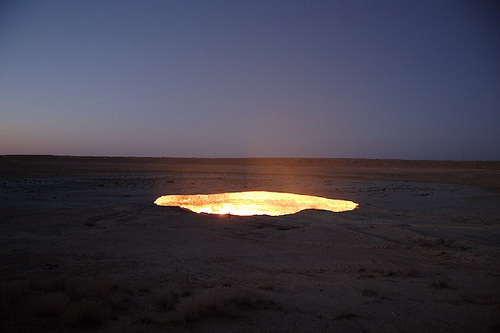
A few points….
Two fingers up is an offensive gesture for the brits and french that pre-dates Australia, it’s from the days when the French would cut off longbowmans fingers. When fighting the French we would wave the fingers at them as a sign of defiance.
The a-ok sign is a minor thing in France but might get you beaten up in South America, as it is the gesture for ‘arse-hole’, which makes sense.
Having seen what happened with the comments on some of the other articles on this site I am keen to see how long it takes for Godwins law to be invoked!
Regardless, Henry, of if the reverse victory sign predates Australia in England and France, if you stick your two fingers up at me, in my country (Australia), I’m gunna come over and break your face – got it? And Yankies, understand that ignorance is no excuse, ok? If you do it too, I’ll break your face as well.
Cool. See ya.
Bruce
I would love to see you try and break my face. I’ll give you 3 shots at it, eh I’m feeling generous, i’ll give you 5. Then its my turn.
Oh and one more thing – Yanks – keep your voices down ok? Americans have always got to talk the loudest and it is really offensive to the rest of the world. If I’m at the table next to you and I know what you’re saying, then you are talking too loudly. I don’t know how that isn’t common knowledge…..jeezus.
I’d like to see you try, ASStralian.
Your thought of the “curling finger motion with one’s index finger connected to dogs in the Philippines” is definitely false. It is used more as an intimidation for a fight (with the image of a street tug), that’s why it’s avoided. Its informal, you can’t see this often even in other countries. Also, yeah you’ll get arrested if your doing that to the police with ill intentions and don’t worry they wont break your fingers or else they’ll get suspended, its democracy here.